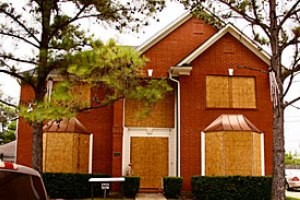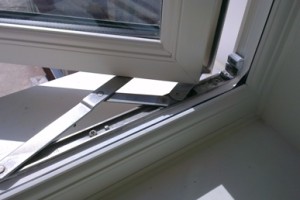
Repair My Windows And Doors
Add a review FollowOverview
-
Sectors Outsourcing Services
-
Posted Jobs 0
-
Viewed 709
Company Description
Are The Advances In Technology Making Repairing Window Better Or Worse?
 Tips For Repairing Window
Tips For Repairing Window
Many windows may require repairs to ensure they are able to open and close correctly. If the seal is damaged and causes energy bills to rise or your home to feel drafty, fixing your window could save you money in the long term.
 Stiff hinges can often be fixed with a little oil or using an ratchet tool that loosens the cover for the operator. DIYers can also repair damaged glass.
Stiff hinges can often be fixed with a little oil or using an ratchet tool that loosens the cover for the operator. DIYers can also repair damaged glass.
Broken or cracked glass
If your window is broken or cracked glass, it’s crucial to address the problem as soon as you can. The crack may get worse if left untreated, and could cause airflow problems within your home. If you’re not confident doing the repair by yourself, a professional can assist.
Depending on the severity of your window There are many ways to fix it. The simplest option is to use clear tape to cover the crack. This will safeguard your family from being damaged by glass shards but still allowing sunlight and air to flow through. You can go a step further by using epoxy. This option is more labor intensive, but it can yield the most attractive end product.
In the beginning, you’ll need to clean the area around the crack. Mix a small amount of soap with water and dip a cotton rag into it. Then, carefully scrub the crack to remove dirt or other debris. Once the window has dried and the epoxy has set, apply it according to the instructions on the package. Once the epoxy has hardened it is possible to use a putty knife to scrape away any excess and smooth the surface. it.
Stress cracks are the most frequent kind of crack that can be found in a home’s window glass. They usually begin near the edges of your window and then spread across the entire pane. They’re usually the result of temperature changes in your home, and they tend to get worse over time.
Double-pane windows need to replace the entire window if one pane breaks. These windows are made of two pieces which work as one unit. This is distinct from normal windows, which can be replaced with a brand new window frame.
To replace the glass pane in double-paned windows, you will need to remove the glazing points or clips that keep the window in place. If you’re replacing a broken pane, be sure to keep track of these pieces so you can replace them in the future. For windows of other types, you’ll need scrape away the old putty and then reapply it with the new pane.
Stained Glass
The tiny pieces of glass used to create stained glass windows are brittle and fragile. Glass can break and be broken by rough treatment, impacting with hard objects or an abrupt temperature change.
Even if a piece of glass has been broken, it can still be repaired and saved the expense of removing and replacing the panel. Stained glass experts can use different methods to repair the damage including re-leading or re-foiling, painting or soldering and putting in new glass.
Replacing or repairing cracked stained glass can be challenging and time-consuming. It is crucial to work with an experienced professional who is familiar with the different repair techniques that are available and who can choose the best one for the specific project. Each repair method has its own strengths, reversibility, and visual effects. This is why each must be assessed individually.
Re-leading is among the most commonly used methods of repairing damaged glass. A skilled craftsman will bend the soft ductile led, also known as came, back into shape to fit the crack. After the piece is bent, it is then soldered into place and then cement is used to keep it in its place. After the new cement has cured, the crack can then be cleaned, polished and sealed.
Another method to repair broken leaded glass is spotting the crack and then replacing the glass. This is a labor-intensive and costly process, but it can be successful. First the cracked piece of glass is removed and cleaned before being sanded to smooth the surface. Then a lead knife or pincers are used to cut off the lead that was previously there and clean off any oxidation or mold growth. After the old lead has been removed the glass surface that was sanded is cleaned and the new lead is then soldered into the place.
A less expensive option for RepairMyWindowsAndDoors repairing sagging stained glass is to strengthen the window. These are rebar like supports that run across the inside of the lead, and connect to the frame in order to stop the glass from sliding. Sometimes, the bars can be hidden behind the foiling with decorative designs making them invisible.
Muntins or Mullions
People who are familiar with windows may be familiar with the term “muntin.” These vertical wood strips separate panes of windows in traditional multi-pane windows. Typically, they’re employed in older homes to preserve their authentic appearance and are often required by city ordinances for building or renovating a historic district. Modern replacement windows typically make use of muntins to improve the aesthetics of the window rather than to ensure durability and strength. But, they can be damaged, and if they are broken or rotting, it’s possible to replace them with new pieces.
Many window manufacturers today don’t distinguish between muntins or mullions because they both have the same function. They are frequently used interchangeably. However, if you’re replacing your windows, you must know the difference between them so you and your contractor are on the same level when discussing the specifics of your project.
A mullion is the single vertical prop that holds glass panes together in a multi-pane design. It was necessary before the advent in glass manufacturing technology, as larger pieces were virtually impossible to produce. Modern windows do not require mullions since the frames are constructed from two glass units and glued to each other. However, certain older kinds of windows do have mullions to provide support and they are often used for aesthetic reasons.
If your mullions are showing signs of age they can be easily repaired them by applying a drop or two of silicone on both sides of the muntin. Then, press it back into the frame. If you’re replacing a horizontal muntin, you might need to employ a coping saw to remove the old piece and then shape the end using a file to fit into the mortise of another horizontal muntin. If you want to blend in, buy an entirely new muntin that is slightly different from the original.
Some IGUs feature both real muntins and mullions which are integrated into the unit to provide effect only. If you’re having issues with these components, it’s time to replace the window.
Frame
If you want to touch up the frame, you can use a sanding pad with a fine grit. This will eliminate any stains or paint that have accumulated. Clean it again, using a dry cloth, and pay special attention to the corners of the mitered joints. Use wood glue to re-glue the joints if they have opened up. You can also use vinegar in these areas to dissolve old adhesive. However, you may need to test the vinegar on a few corners prior to applying it to the entire area.
If the corners are loose and a problem, you can often disassemble the entire frame to examine them, and then follow the steps 3 through 8 to solve the issue. If the separation is only slight and on one side, it might be possible to make the joint more open by wiggling.
If the corners have shattered completely apart, you will need needle-nose pliers, a flat surface, a small clamp, and wood glue. If only the bottom and top corners are broken You can hammer the finishing nails (these are nails that are thin and a similar size to a head) into the corner to hold it firmly once the glue has dried. Be cautious not to place the nails too near the corner, as you could weaken the frame. You can also reinforce the corner with carpenter’s glue and an hammer or wood putty.
